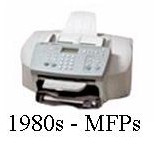 The post war boom of the 1950s saw unprecedented growth in purchases of both cars and leisure boats. Some marketing genius decided why not combine them into one?!? While the boatcar did make it easier to tow your leisure craft to the nearest lake or bay, the inability to throw out a good cast from a fishing rod relegated this to the collectors' market, where the few that still exist bring in high prices today.
The post war boom of the 1950s saw unprecedented growth in purchases of both cars and leisure boats. Some marketing genius decided why not combine them into one?!? While the boatcar did make it easier to tow your leisure craft to the nearest lake or bay, the inability to throw out a good cast from a fishing rod relegated this to the collectors' market, where the few that still exist bring in high prices today.
 After the fiasco of the carboat, the boys in marketing (they were all boys back then) went back to the drawing board and figured out their problem: they mixed the wrong product with the car. It should have been a plane instead of a boat! Alas, this attempt also resulted in failure, mainly due to the inability to find wide enough parking places at the new indoor malls that were starting to crop up by the end of the decade.
After the fiasco of the carboat, the boys in marketing (they were all boys back then) went back to the drawing board and figured out their problem: they mixed the wrong product with the car. It should have been a plane instead of a boat! Alas, this attempt also resulted in failure, mainly due to the inability to find wide enough parking places at the new indoor malls that were starting to crop up by the end of the decade.
 The 1970s saw new advances in science and the produce people figured they would get into the convergence game by combining two vegetables few liked into a single one everyone could hate. They succeeded by creating a vegetable that had the blandness of cauliflower with the rough texture of broccoli. While you can occasionally find broccoflower in the store, it has never been offered at any of the finer (or less fine) dining establishments of the U.S.
The 1970s saw new advances in science and the produce people figured they would get into the convergence game by combining two vegetables few liked into a single one everyone could hate. They succeeded by creating a vegetable that had the blandness of cauliflower with the rough texture of broccoli. While you can occasionally find broccoflower in the store, it has never been offered at any of the finer (or less fine) dining establishments of the U.S.
 The 1980s found convergence success in the Multifunctional Printer (MFP) by combining four products that functioned poorly by themselves - fax machine, printer, copier and scanner - into a single product that functioned even worse. But people needed to reclaim desk space from all the gadgets that were taking over their office, and trying to get help from a single source when things went wrong was easier than trying to call four different help lines.
The 1980s found convergence success in the Multifunctional Printer (MFP) by combining four products that functioned poorly by themselves - fax machine, printer, copier and scanner - into a single product that functioned even worse. But people needed to reclaim desk space from all the gadgets that were taking over their office, and trying to get help from a single source when things went wrong was easier than trying to call four different help lines.
 The 1990s saw politicos getting onto the convergence bandwagon with their introduction of Billary. Fortunately the initial product was rejected, although there is a reintroduction planned for 2008.
The 1990s saw politicos getting onto the convergence bandwagon with their introduction of Billary. Fortunately the initial product was rejected, although there is a reintroduction planned for 2008.
And the 00s? I think we'll see many more attempts my marketers to converge dissimilar products since it is easier for a marketing person to combine two or more products that are already on the market than to create a brand new product. The proposed business plan is deemed less "risky" since markets already exist for the current single products, meaning it is easier to get buy-in from management. Sometime convergent products make sense, but as I think I have shown here, the result is often ugly.
Extra Credit: Can anyone name the "convergence product" from a Classic Saturday Night Live "commerical"?

No comments:
Post a Comment